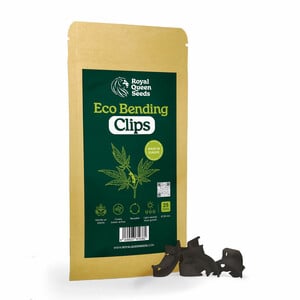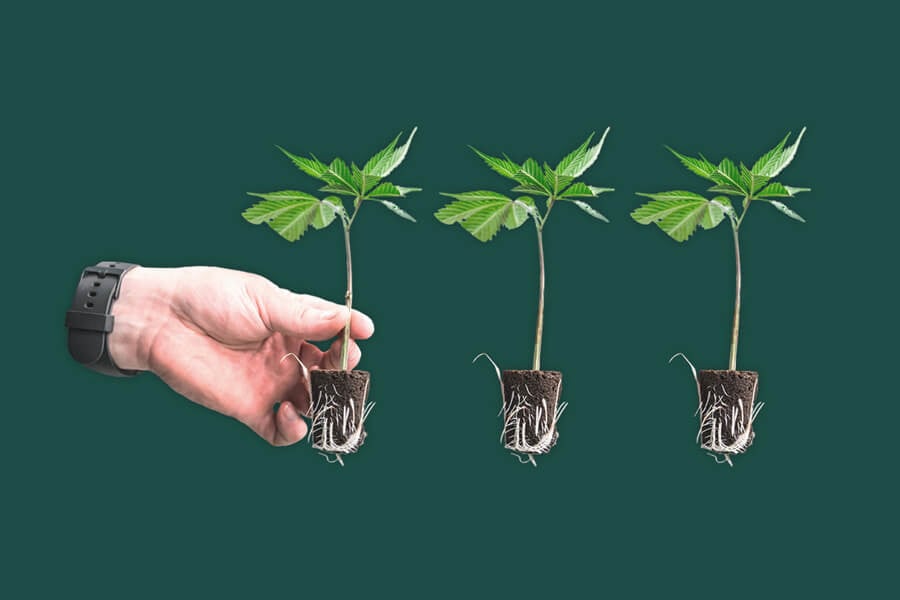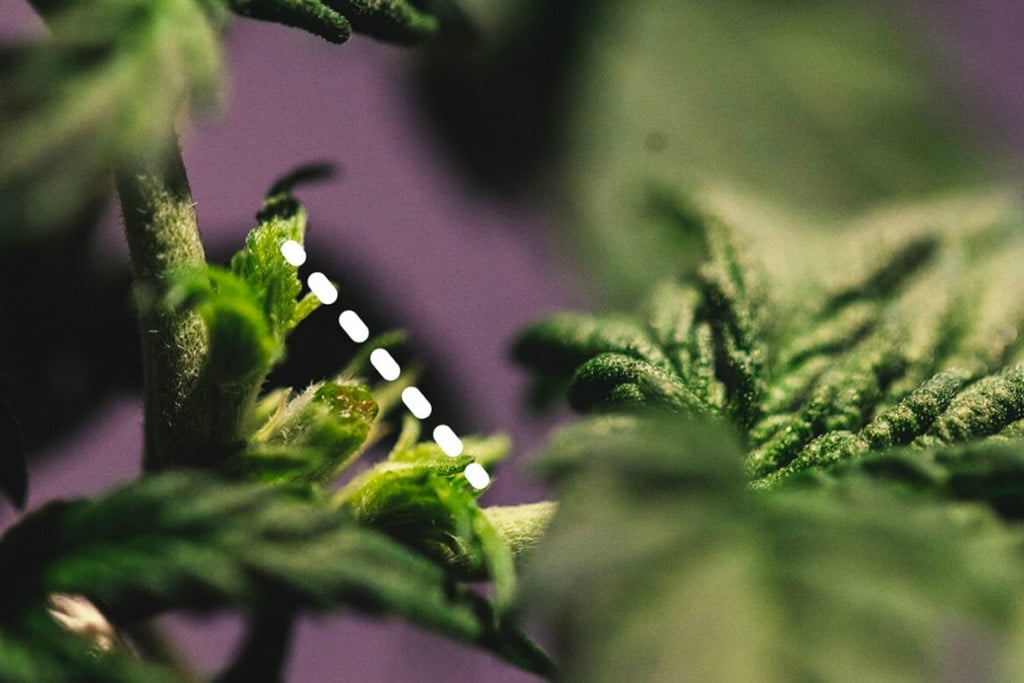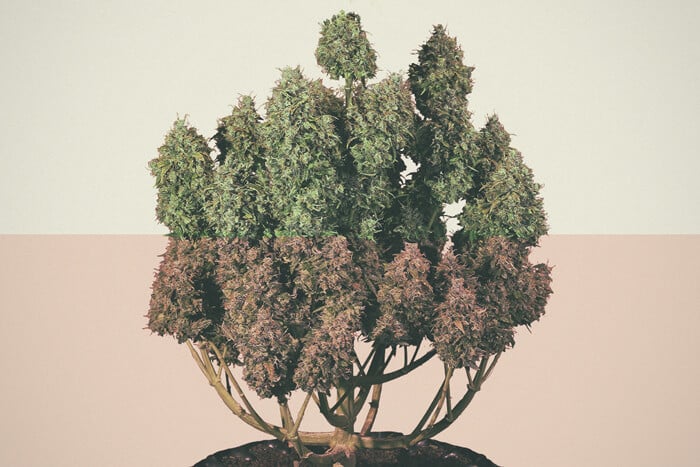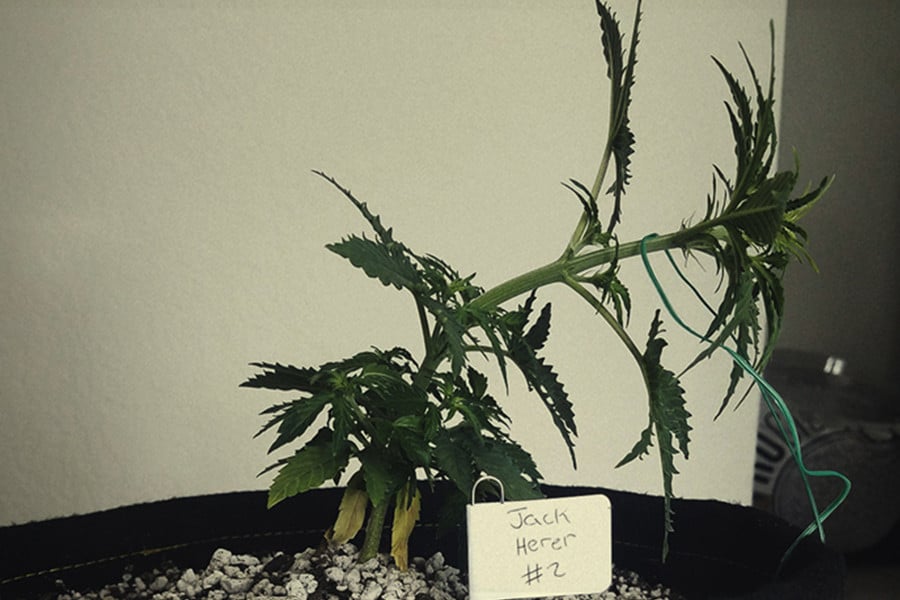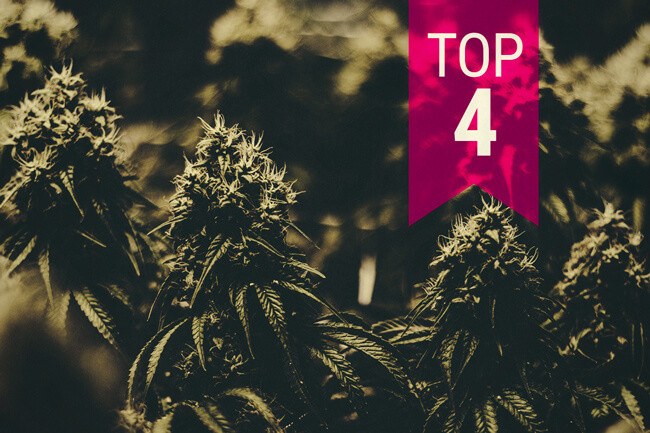.
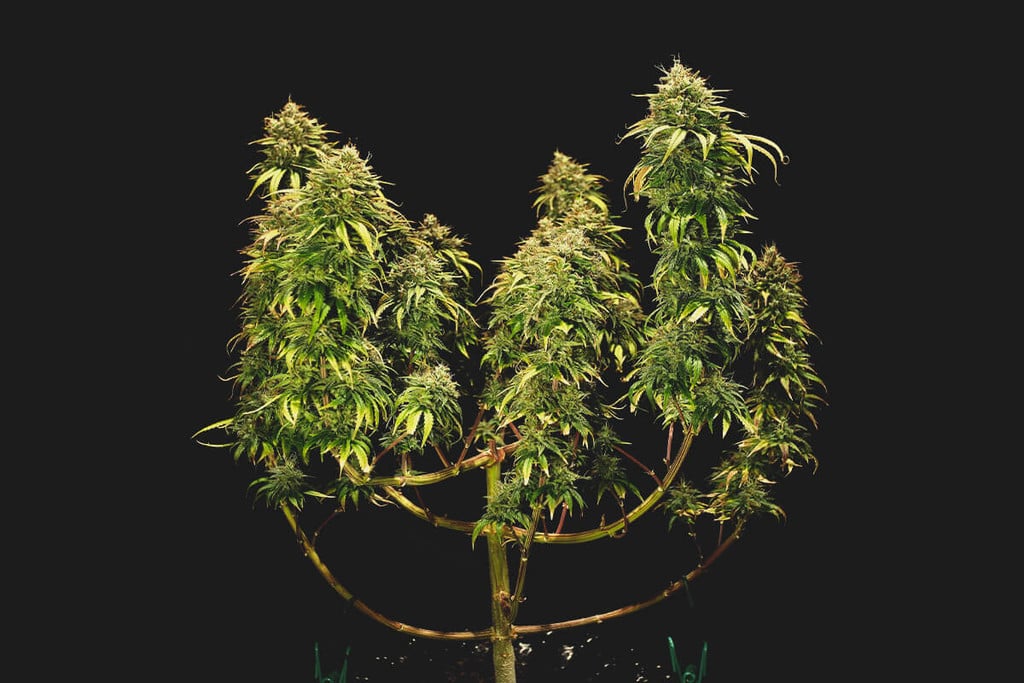
How to Combine Low-Stress Training & High-Stress Training for Bigger Yields
Who doesn't love bigger yields? In this blog, we explore how you can combine different training techniques to achieve your greatest harvest yet.
Contents:
Before we begin exploring how to use different low and high-stress training techniques to achieve a bigger harvest, we would like to point out that this blog is intended for advanced growers who use feminised or regular photoperiod seeds. It’s not advised to perform these techniques on autoflowering varieties due to their short vegetative stage.
As you may already know, it is possible to manipulate the growth of a cannabis plant to control its dimensions and improve the utilisation of your grow space to achieve the maximum yield possible. These techniques include low-stress training (LST) and high-stress training (HST), the latter of which encompasses topping and fimming, defoliation, supercropping, and others.
We've already covered all of these training methods in depth, and we highly suggest you check out our individual blogs to refresh your mind. You might decide to try them all, or just a few, depending on your personal circumstances.
Understanding LST and HST
- What is the difference between low-stress training vs high-stress training?
- LST, or low-stress training, is a training technique that involves gently bending and tying down a cannabis plant's stems and branches. High-stress training (or HST), on the other hand, is an umbrella term for more intense training methods (such as topping and super cropping) that involve purposefully wounding a plant in order to increase its growth and yields.
- How do you perform high-stress training?
- High-stress training is best utilised by intermediate or experienced growers, and it can be performed by using scissors or razors to top or FIM a plant, or by pinching and lightly snapping a plant's branches (super cropping).
- What is stress training for weed?
- While the word "stress" has all sorts of negative connotations, mild amounts of stress can actually encourage cannabis plants to grow in particular ways, take up more nutrients, and produce bigger harvests.
- Is topping a form of high-stress training (HST)?
- Yes. Topping involves cutting a vegging plant's main stem in order to encourage it to grow two new main stems. This process causes a high degree of stress, and plants can take multiple weeks to recover (depending on the genetics and strength of the plant).
Which LST and HST Cannabis Training Techniques Can Be Used Together?
Given you are using a photoperiod variety and your canopy is in very good health, you can combine virtually any technique. However, you have to carefully plan a schedule when applying each technique to allow for sufficient recovery. It is advised to start training your plant from the 3rd–4th week of vegetative growth, or when your plant has developed at least four internodes.
High-Stress Training Weed Plants: Step by Step
We already mentioned “recovery time” earlier on, but what does that mean exactly? Essentially, it’s the amount of time a plant needs to naturally recover from any type of shock or stress, e.g.transplant shock, heat stress, training techniques, etc.
Generally speaking, the recovery time of cannabis plants is around one week; bear in mind that each and every plant will behave differently, so allow yourself time to assess the situation, and make sure to listen to your plants’ needs. If you are planning to apply four different techniques to your plants, vegetative growth will be lengthened by around one month.
Below, you will find an example of how to combine different training methods. This is not the only way you can apply them, so make sure you tailor the techniques to your plants, and not the other way around.
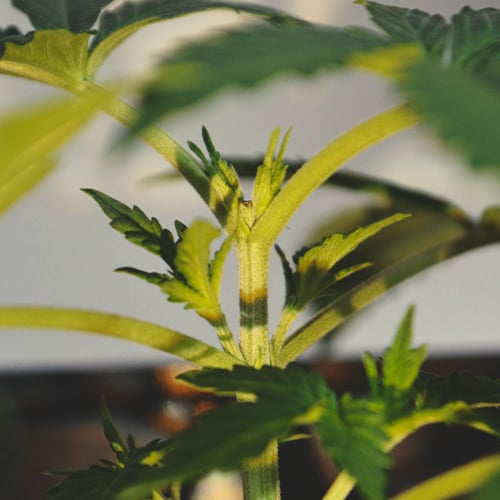 |
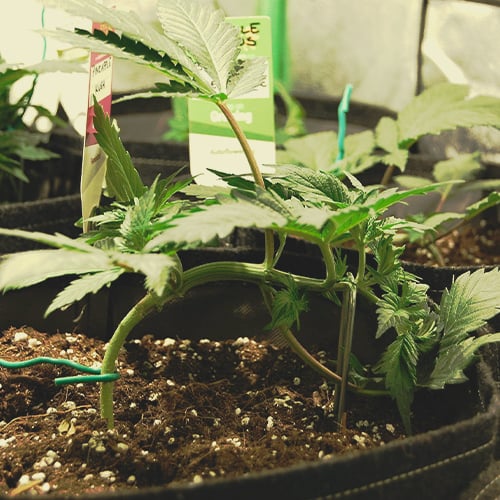 |
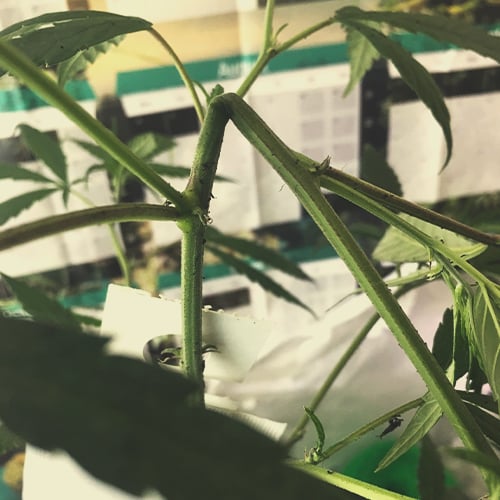 |
| Topping (Week 3) | Low Stress Training (Week 4) | Supercropping (Week 5) |
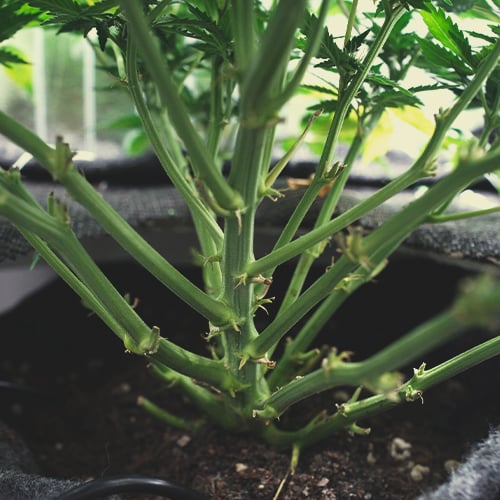 |
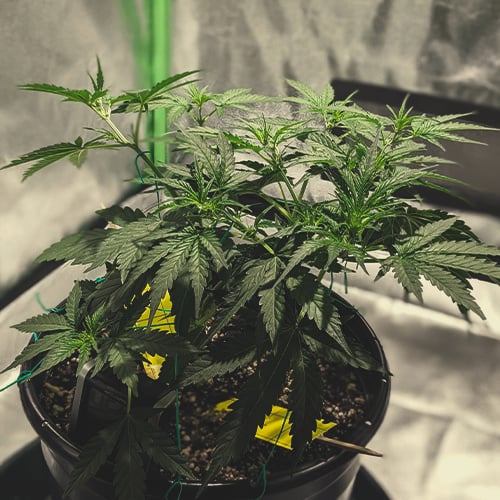 |
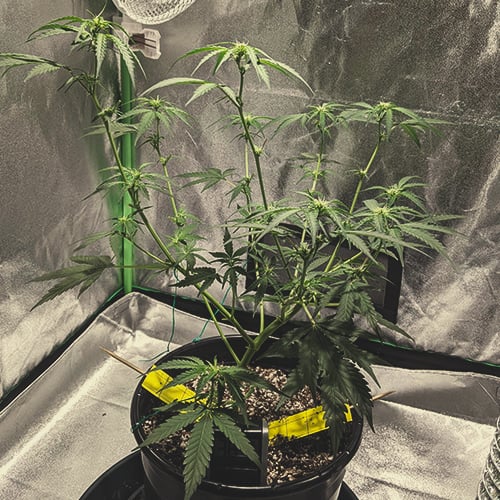 |
| Lollipopping (Week 6) | Defoliation (Before) (Week 7) | Defoliation (After) (Week 7) |
• Week 3: On day 1 of week 3 (or 4, based on internodal growth) of the vegetative stage, you can apply the first technique by topping your plant to promote the development of side branches.
• Week 4: You can apply low-stress training (LST) to further shape and control the development of side branches.
• Week 5: To prepare the branches to sustain a heavy load of frosty buds, you can apply supercropping and/or use a net, zip ties, or wire to help the branches. Also, supercropping will cause stress to the plant, which will increase trichome production as a response. Avoid using a ScrOG net if you need or plan to move your plants around, as it will be difficult or even impossible to do.
• Week 6: You can now apply some lollipopping to clear the bottom section of your branches and limit the growth of popcorn buds.
• Week 7: As your plant gets bigger and bushier, you can perform defoliation to promote airflow and light exposure as your plant approaches the flowering stage.
It is not advised to perform training techniques during the flowering stage, as stress during this period can lead to potential issues. However, some growers continue to apply some defoliation and LST during the flowering stage to help maintain optimal light exposure and airflow. This is totally up to you and your personal preferences/necessities.
Want full confidence in your training timeline? Download our Pro Growing Guide for detailed LST, super-cropping, and defoliation walkthroughs, perfect companions to your week-by-week plan.
Free Advanced
Growing Guide!
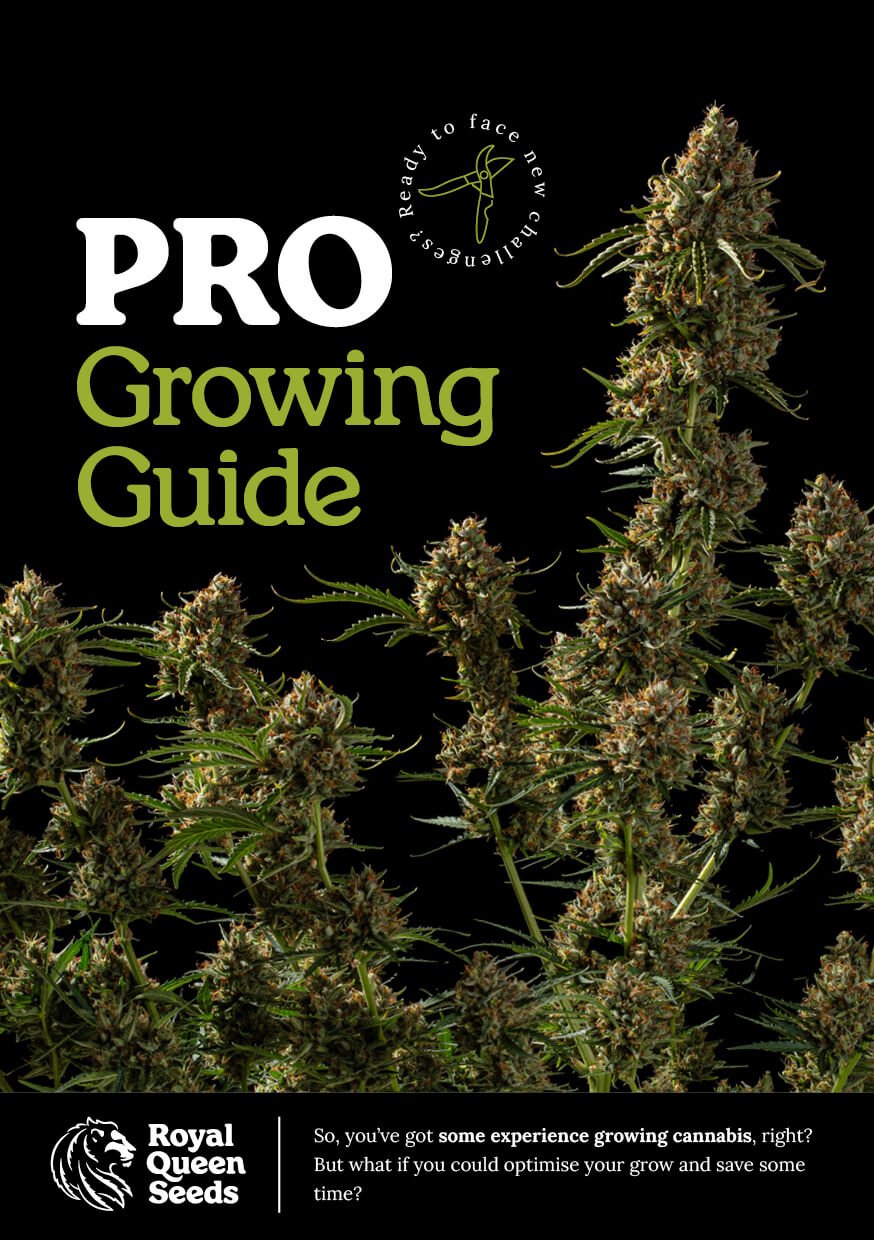
Pros of Combining HST and LST
Combining different training methods offers several potential benefits, perhaps the most alluring of which is a bigger harvest. By manipulating the growth of your plant, it is possible to promote the creation of new bud sites and maximise the final result.
Another benefit of combining techniques is that you can more significantly control the size of your plants. For instance, if you wish to grow your favourite massive sativa strain in a small grow tent, the combination of different training techniques can help you shape and manage the tall heights of these cannabis monsters.
Combining techniques can be an excellent and fun way to practice and improve your growing skills.
Cons of Combining HST and LST
If applied incorrectly, these techniques may stunt or slow down growth, turn plants into hermaphrodites, or even kill them. Although these methods have the potential to improve the quality and size of your yield, plants require a long period of vegetative growth before they are ready to flower and subsequently harvest.
This also means that the costs of electric bills and water will increase, and so too will the quantity of nutrients used.
LST and HST: Tips and Tricks
- Always start your growing operation by choosing high-quality genetics from reputable seed banks. Here at RQS, we are proud to offer a catalogue of top-quality feminised seeds for any type of grower.
- When topping, defoliating, and trimming your plants, clean your trimming scissors before and after use with an antibacterial solution. This will help reduce the risk of fungal contamination or buildup of other bacteria. It's highly recommended to use a pair of professional scissors especially when you are dealing with precious sugar leaves!
At RQS, we are proud to provide you with some of the best Curved Trimming Scissors, specially designed to harvest and trim cannabis with ease and efficiency. Also, their durable stainless steel blades can be easily detached to remove resin and/or for cleaning purposes. - Apply low-stress training, supercropping, and any technique that involves bending the plants when the soil is dry to avoid critical damage. The branches can break easily if your growing medium is saturated in water. In case this happens, you can minimise damage by using clean bandages and tape. In the majority of cases, the branches will be able to fully recover and produce some great buds!
- Use Smart Pots or Air Pots to improve airflow in the root zone. At RQS, we developed Fabric Pots with a unique “Aqua Breathe” geotextile layer that improves transpiration and supports optimal growth. Available in four different sizes, these pots are environmentally friendly and washable.
- Use a calendar or diary to keep track of your combination of techniques and recovery times to find the perfect method that works for you and your plants.
Are You an Advanced Grower? Combine Your Training Techniques!
Training your cannabis plants doesn’t need to be overwhelming or extremely difficult. As a grower, you need to assess which techniques are worth applying in your situation, and be ready to intervene if things go south. Make sure to check out the blogs mentioned above, and these 7 Cannabis Training Mistakes to Avoid.
We hope to have inspired you to try new things and combine different methods. Your next great harvest is waiting for you.
Happy growing!


























